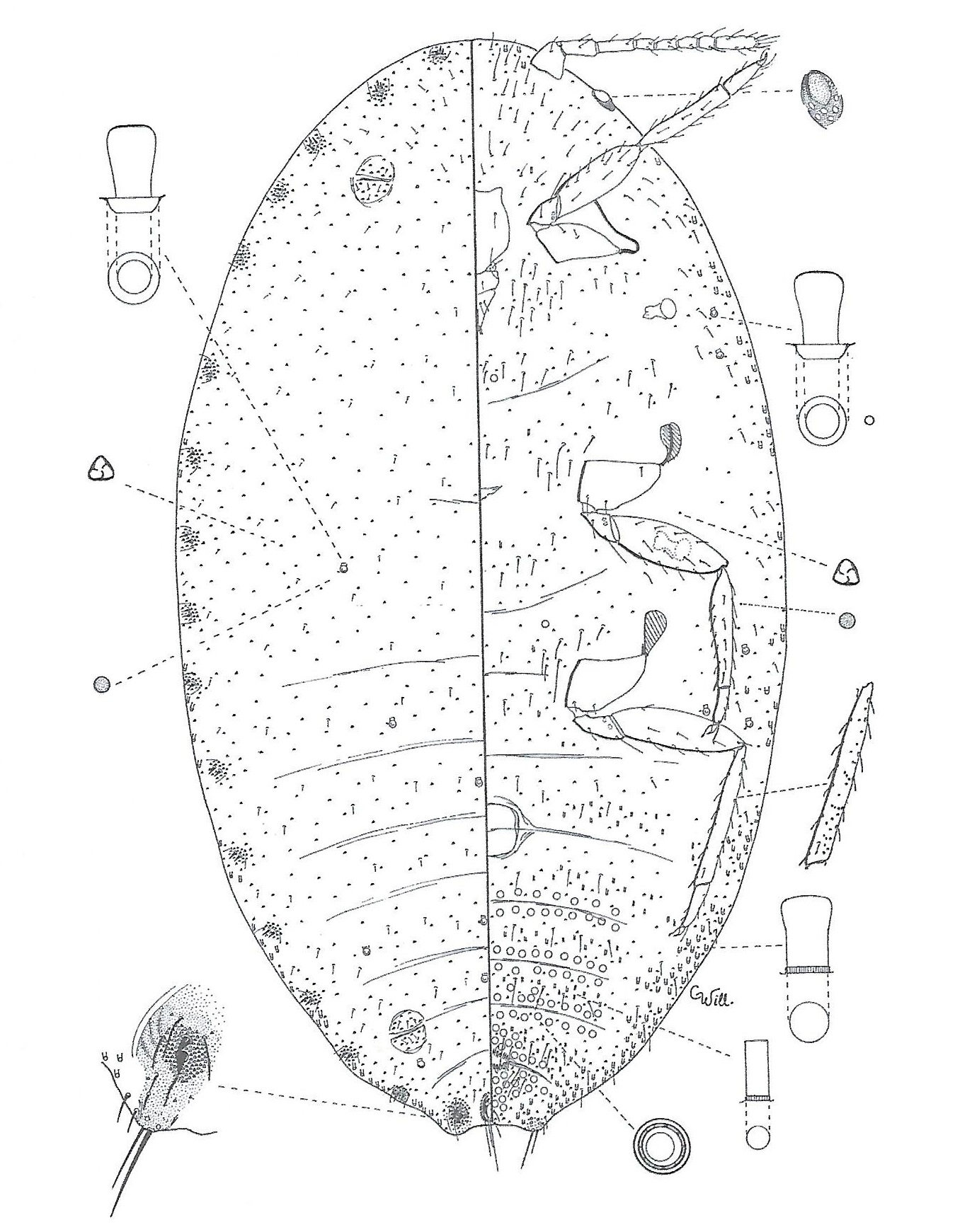Valid Names Results
Pseudococcus salazari Granara de Willink, 2018 (Pseudococcidae: Pseudococcus)Nomenclatural History
- Pseudococcus salazari Granara de Willink 2018: 41. Type data: PERU: Tumbes, 3/4/1967, on Urocarpidium sp., (Malvaceae). by Salazar. Holotype, female, by original designation Type depository: Tucuman: Fundacion e Instituto Miguel Lillo, Universidade Nactional de Tucuman, Argentina; accepted valid name Illustr.
Common Names
Ecological Associates
Hosts:
Families: 2 | Genera: 4
- Euphorbiaceae
- Codiaeum variegatum | GranarGo2018
- Croton | GranarGo2018
- Malvaceae
- Gossypium | GranarGo2018
- Urocarpidium | GranarGo2018
Geographic Distribution
Countries: 2
- Colombia | GranarGo2018
- Peru | GranarGo2018
Keys
- GranarGo2018: pp.10-14 ( Adult (F) ) [Central & South American Pseudococcus]
Remarks
- Systematics: Pseudococcus salazari is similar to the group formed by P. galapagoensis and P. panamaensis. because they have translucent pores on the tibia, eyes with a sclerotized edge with several disc pores and ducts with oral rims absent on the front of the dorsum. They differ because P. salazari has 4-8 ducts with rims between C5 and C11 (P. galapagoensis between 12-25 and none on P. panamaensis) and P. salazari has cerarii with a sclerotized surface on the penultimate anal segments (P. galapagoensis and P. panamaensis cerari only on the last segment) (Granara de Willink & González, 2018)
- Structure: Translucent pores on the tibia; eyes with sclerotized edge and 6-9 discoidal pores; anal cerari and on a sclerotized surface, with numerous trilocular pores closely grouped around the setae; tubular canals with oral rims on the dorsum on the thorax and abdomen submarginal, and in the middle zone of segments II to VI, absent in the cephalic region; 5-6, in marginal zone from C5 to C11. (Granara de Willink & González, 2018)
- General Remarks: Detailed description and illustration in Granara de Willink & González, 2018.
Illustrations
Citations
- CaballPaKa2021: distribution, 10
- GranarGo2018: description, diagnosis, host, illustration, importance, key, taxonomy, 7, 10-14, 41-42



